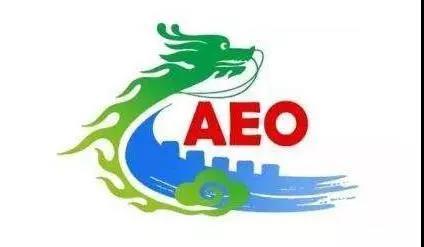
11月27日,海关总署在苏州举办了全国海关企业信用管理政策宣讲会,其中对即将出台的《海关认证企业标准》中的财务状况标准做了进一步明确: 1、实行资产负债率指标一票否决;同时纳入综合财务状况考核范围。 2、对反映综合财务状况的5项具体指标权重做出明确规定,以优序对比法确定最终权重。 3、高级认证与一般认证的各项财务指标标准值均由海关总署统一发布。 4、新标准有关财务状况标准确定取消了可以开立保函替代达标的做法。 AEO认证中财务状况标准是一项重要的刚性指标,通过对此项指标的检查可以掌握企业的财务状况,从而确保企业在进出口活动中履行相应的法定偿付义务。 日前,《海关AEO认证企业标准》征求意见稿中对财务状况指标做了较大的调整,引入了权重的概念,并且考核范围更加全面,从而可以更真实的了解企业的财务状况。 今天,我们就WCO《海关AEO认证者指南》与中国海关《海关AEO认证企业标准》(征求意见稿)的相关内容进行比较、分析异同,以供参考。 一、提出的财务标准要求 WCO《海关AEO认证者指南》提出了财务可行性的评估指标、认证测试方法,同时给出了相关例证。 Financialviability means good financial standing which is sufficient to fulfill thecommitments of the applicant, with due regard to the characteristics of thetype of business activity concerned. 财务可行性意味着良好的财务状况,足以履行申请人的承诺,同时应适当结合商业活动类型的特征进行考虑。 Anyindication that the applicant is unable or may in the immediate future beunable to meet its financial obligations is to be carefully considered andevaluated. 如果申请人无法或可能在不久的将来无法履行其财务义务,则应仔细考量和评估。 Todetermine if the applicant is subject to bankruptcy proceedings. 确定申请人是否受到破产程序的约束。 Todetermine if the applicant has fulfilled (during a certain period) theirfinancial obligations regarding payments of customs duties and all otherduties, taxes or charges which are collected on or in connection with theimport or export of goods. 确定申请人是否履行了(在特定时期内)关于支付关税的所有财务义务以及在货物进出口方面与之相关的所有其他关税、税款或费用。 Todetermine if the applicant demonstrates on the basis of the records andinformation available for dedicated period preceding the submission of theapplication that they have sufficient financial standing to meet theirobligations and fulfil their commitments having regard to the type and volumeof the business activity, including having no negative net assets, unless wherethey can be covered. 确定申请人是否根据提交申请之前的规定期间记录和信息,证明他们有足够的财务能力来履行其义务并履行对其预计业务活动的类型和数量的承诺,包括没有负净资产,除非它们可以涵盖。 Listof methodological indicators to demonstrate sufficient financial standing(Source: AEO Guidelines, Chapter 2.III.3) 显示充足财务状况的指标清单(来源:AEO指南,第2章第3节) TheCustoms authorities can establish whether the applicant is able to meet his/herlegal debts to third parties by checking the applicant's full sets of financialstatements due over the past three years, taking into account: 海关可以通过检查申请人过去三年的全套财务报表,以确定申请人是否能够向第三方偿还其法定债务,同时检查: l where required by companylaw, that the accounts have been filed within the time-limits laid down in thatlaw. Failure to file the accounts within the required time-limits is anindicator that the business may have problems with its records or be infinancial difficulties. Where the time-limits have not been met, the Customsauthorities should make further enquiries to establish the reasons for this; l 根据公司法的要求,账目须在法律规定的时限内提交。未能在规定的时限内提交账目表明企业可能存在记录问题或财务困难。如果没有满足时限要求,海关应进一步调查确定原因; l any audit qualifications orcomments about the continuation of the business as a going concern by, forexample, the auditors or directors. Where internal or external auditors havedoubts about the solvency of a business, they may either qualify the accounts orrecord their reservations in their reports. Similarly, directors may also makesuch a comment in exceptional circumstances. Where this is the case, theCustoms authorities should investigate the reason for the comment inconjunction with the auditor or director and consider its significance for thebusiness; l 作为一个持续经营的企业,由任何具有相应资质人员对其业务延续做出审计或评估,比如,由审计师或董事做出的。如果内部或外部审计师对企业的财务偿付能力存有疑惑,他们可以对账务进行审查或在其报告中记录保留意见。同样,董事也可以在特殊情况下作出此类评估。在这种情况下,海关应与审计师或董事一起调查作出评估的原因,并考虑其对业务开展的影响; l any contingent liabilitiesor provisions. Significant contingent liabilities will give an indication of the applicant’s ability to payfuture debts; l 任何负债或准备金。重大负债将考验申请人偿付未来债务的能力; l any additional financialdocuments, such as income statement or cash flow, can be used to assess thefinancial standing of the company; l 任何其他财务文件,如损益表或现金流量,均可用于评估公司的财务状况; l any ratio analysis, ifavailable (e.g. current ratio (current assets divided by current liabilities)which measure the company’s liability to meet present obligations from its liquid assets); l 任何比率分析,如果有的话(例如,流动比率(流动资产除以流动负债),用于衡量公司从流动资产中履行当前义务的责任); l any other conclusionsprovided by financial or research institutions; l 金融或研究机构提供的任何其他结论; l other indicators that couldbe worth assessing, such as whether a company has been subject to significantindustrial action and whether a company has lost major projects in which it wasinvolved. l 其他可能值得评估的指标,例如公司是否受到重大产业行为的影响以及公司是否已经失去了参与的重大项目。 AEOfinancial solvency criteria: Financial indicators AEO财务偿付能力标准:财务指标 Absolute indicators绝对指标 1 Net assets 净资产 2 Amount of charter capital 注册资本金额 3 Residual value of fixed assets 固定资产的剩余价值 Relative indicators相对指标 1 Equity ratio 产权比率 2 Liquidity adequacy ratio 流动资金充足率 3 Return on equity (ROE) 股本回报率 4 Financial stability ratio 金融稳定比率 5 Working capital financed by equity to total assets 营运资金由股权融资至总资产 6 Current assets to equity ratio 流动资产与权益比率 TheCustoms Code of the Eurasian Economic Union (hereinafter the “EAEU”) stipulatesfinancial stability as a condition for granting the status of an AuthorizedEconomic Operator (hereinafter “AEO”). 欧亚经济联盟(以下简称“EAEU”)的海关法规定金融稳定性是授予经认证经营者(以下简称“AEO”)地位的条件。 TheEurasian Economic Commission (hereinafter – Commission), together with EAEUmember states, has developed a methodology for determining the financialstability of the potential AEOs. 欧亚经济委员会(以下简称委员会)与EAEU成员国一起开发了一种确定潜在AEO财务稳定性的方法。 Thismethodology was approved by the Council of the Commission on 15 September 2017. 该方法于2017年9月15日获得委员会理事会的批准。 Thisdocument provides a unified algorithm for assessing the financial stability ofpotential AEOs, for Customs purposes. At the same time, this document is opento and available for business as well as for Customs authorities. It rules outa subjective approach to determining financialsustainability. 本文件提供了评估潜在AEO财务稳定性的统一算法。 同时,本文件对商业和海关开放并可供使用。它排除了确定财务可持续性的主观方法。 Thereis a total of nine indicators of financial sustainability. Three of them areabsolute, expressed in national currencies. Six indicators are, however,relative and are expressed as percentages (ratio). 财务可持续性总共有九个指标。其中三个是绝对的,以本国货币表示。其他六个指标是相对的,并表示为百分比(比率)。 Eachindicator has a minimum value. Points are allocated when companies’ parametersachieve these minimum values. If the potential AEO reaches a calculated value exceeding or equal to theset value of a particular indicator then it may be allocated a certain numberof points. A company is not precluded from becoming an AEO if it has no pointsfor a particular indicator. In such a case, the company may amass points foranother indicator if its parameters exceed minimum values. 每个指标都有一个最小值。当公司的参数达到这些最小值时,就为其分配积分。 如果潜在AEO超过或等于特定指标的设定值的适合值,则可以为其分配一定数量的积分。如果公司没有此积分,并不排除成为AEO。在这种情况下,如果公司的参数超过最小值,公司可能会有另一个指标积分。 Allpoints received must be totalled up and, if they exceed 50 points, then theapplicant is considered financially sustainable for Customs purposes. 收到的所有积分必须总计,如果超过50分,则申请人在海关方面被认为具有财务可持续性。 Thefinancial solvency indicator values are calculated on the basis of the legalentity’s annual accounting reports. The organization’s financial sustainabilityis subject to annual reassessment. If the company is considered as financiallysustainable (i.e. if it meets the financial solvency criteria) then it does notneed to provide a financial guarantee. 财务偿付能力指标值是根据法人实体的年度会计报告计算的。该组织的财务可持续性需要进行年度重新评估。 如果公司被认为具有财务可持续性(即,如果它符合财务偿付能力标准),那么它不需要提供财务担保。 Theabove-mentioned suggestions are based on the new EAEU Customs Code that enteredinto force on 1 January 2018. 上述建议基于2018年1月1日生效的新EAEU海关法。 二、中国海关AEO认证标准对财务标准的要求 会计信息 (1)会计账簿和财务会计报告等会计资料真实、准确、完整记录和反映进出口活动的有关情况,财务处理及时、规范。 以审计报告为判断依据,提交无保留意见审计报告的,为达标;提交带保留意见审计报告的,为部分达标;提交否定意见或者无法表示意见的审计报告,或者不能提交审计报告的,为不达标。 (2)企业申请认证的,提交当年度会计师事务所审计报告,审计报告所反映的企业财务状况真实、完整、规范、合法;重新认证的,企业自成为高级认证企业起每年接受会计师事务所审计,审计报告所反映的企业财务状况真实、完整、规范、合法。 提交申请认证或者重新认证当年做出的审计报告。提交无保留意见审计报告的,为达标;提交带保留意见审计报告的,为部分达标;提交否定意见或者无法表示意见的审计报告,或者不能提交审计报告的,为不达标。检查企业成为高级认证企业期间是否每年均接受会计师事务所审计并出具审计报告。 综合财务状况 企业在偿付、盈利、缴税能力方面整体状况良好,综合速动比率、现金流动负债比率、资产负债率、营业利润率、净资产收益率等情况在安全或者正常范围内。 企业在偿付、盈利、缴税能力方面整体状况良好,综合速动比率、现金流动负债比率、资产负债率、营业利润率、净资产收益率等情况在安全或者正常范围内。 综合分值=速动比率分值*权重系数+现金流动负债比率分值*权重系数+资产负债率分值*权重系数+营业利润率分值*权重系数+净资产收益率分值*权重系数。 综合分值≥0,为0分,达标;-1≤综合分值<0,为-1分,部分达标; 综合分值<-1,为-2分,不达标。 盈利能力: 营业利润率(权重0.36) 营业利润率=营业利润/营业收入 (本期金额) 净资产收益率(权重0.28) 净资产收益率=净利润/平均净资产=净利润/((年初所有这权益+年末所有者权益)/2) (净利润为本期金额) 偿债能力: 速动比率(权重0.08) 速动比率=速动资产/资产总额=(流动资产-存货)/资产总额(期末值) 现金流动比率(权重0.08) 现金流动负债比率=经营性现金流量/流动负债(经营性现金流量为本期金额、流动负债为期末值) 资产负债率(权重0.2) 资产负债率=流动负债/流动资产 (期末值) 会计信息 (1)会计账簿和财务会计报告等会计资料真实、准确、完整记录和反映进出口活动的有关情况,财务处理及时、规范。 以审计报告为判断依据,提交无保留意见审计报告的,为达标;提交带保留意见审计报告的,为部分达标;提交否定意见或者无法表示意见的审计报告,或者不能提交审计报告的,为不达标。 (2)企业申请认证的,提交当年度会计师事务所审计报告,审计报告所反映的企业财务状况真实、完整、规范、合法;重新认证的,企业自成为高级认证企业起每年接受会计师事务所审计,审计报告所反映的企业财务状况真实、完整、规范、合法。 提交申请认证或者重新认证当年作出的审计报告。提交无保留意见审计报告的,为达标;提交带保留意见审计报告的,为部分达标;提交否定意见或者无法表示意见的审计报告,或者不能提交审计报告的,为不达标。检查企业成为高级认证企业期间是否每年均接受会计师事务所审计并出具审计报告。 综合财务状况 企业在偿付、盈利、缴税能力方面整体状况良好,综合速动比率、现金流动负债比率、资产负债率、营业利润率、净资产收益率等情况在安全或者正常范围内。 下列会计科目数据以当年作出的企业审计报告中财务报表数据为准: 速动比率=速动资产/流动负债; 速动资产=流动资产-存货; 现金流动负债比率=经营现金净流量/流动负债; 资产负债率=负债总额/资产总额 营业利润率 = 营业利润/营业收入; 净资产收益率=净利润/平均净资产(平均净资产=年初所有者权益+年末所有者权益)/2; (1)速动比率、现金流动负债比率、资产负债率、营业利润率、净资产收益率以国资委最新颁布的《企业绩效评价标准值》的(优秀值、良好值、平均值、较低值、较差值)作为参照,其中速动比率、现金流动负债比率、营业利润率、净资产收益率大于等于优秀值2分、大于等于良好值小于优秀值1分、大于等于平均值小于良好值0分、大于等于较差值低于平均值-1、小于较差值-2;资产负债率小于等于优秀值2分、小于等于良好值大于优秀值1分、小于等于平均值大于良好值0分、小于等于较差值大于平均值-1、大于较差值-2。 综合分值=速动比率分值*权重系数+现金流动负债比率分值*权重系数+资产负债率分值*权重系数+营业利润率分值*权重系数+净资产收益率分值*权重系数。 综合分值≥0,为达标;标准值≤综合分值<0,为部分达标;综合分值<标准值,不达标。 注:权重系数以及综合分值的达标标准由总署定期发布。 三、异同分析 我们对《WCO海关AEO认证者指南》与中国海关《海关AEO认证企业标准》(征求意见稿)财务状况指标进行分析、比较,得出以下结论,供大家参考。 1、WCO《AEO认证者指南》中对“财务可行性”要求过于概括、笼统,但选取了欧盟和欧亚经济联盟等地区的标准作为附件例证供各成员国参考,表明WCO希望各成员国能根据各国和地区的实际情况建立更为客观细致、便于操作、更趋量化的财务状况认证标准。中国海关在制定相关AEO认证财务状况标准方面较好地理解和贯彻了WCO的指导思想,对此标准的要求更为具体、详细,并且也被WCO《AEO认证者指南》附件四做为“财务可行性”例证向各成员国进行了推介。 2、《海关认证企业标准》(征求意见稿)中对企业财务状况标准的规定扩大了认证企业财务指标审查的范围,修改了部分参考指标,以期能更全面、真实的反应企业财务状况。 3、《海关认证企业标准》(征求意见稿)改变了现行认证标准中对具体财务指标进行逐项评估的规定,采用了“综合财务状况”的评估方法,并引入“权重”概念进行综合计算,此法与欧亚经济联盟的规定有相似之处。目前的征求意见稿对高级认证企业的各项财务指标权重和参考标准值已确定,但对一般认证企业各项财务指标的权重和参考标准值则采取由海关总署定期发布的动态管理方法,既有区别性,又有一定的灵活性。 4、《海关认证企业标准》(征求意见稿)取消了现行认证标准中如果最终财务指标不达标或部分达标,允许申请人提供银行或非银行金融机构的财务担保救济措施。一方面使得财务状况标准成为真正的不可整改“刚性”标准;另一方面未综合考虑行业特性、产业变化、营商环境对认证企业产生的多方影响,可能会降低企业对AEO制度的支持热情,一定程度上影响AEO制度的全面推进。1)Financial viability财务可行性
2)Validation testingtechniques for financial viability 财务可行性的认证测试技术
3)Examples ofFinancial Viability Indicators 财务可行性指标的例证
(1)The European Union 欧盟财务可行性指标的例证
(4)The EurasianEconomic Union (EAEU) 欧亚经济联盟财务可行性指标的例证
1)高级认证企业财务状况标准
2)一般认证企业财务状况标准